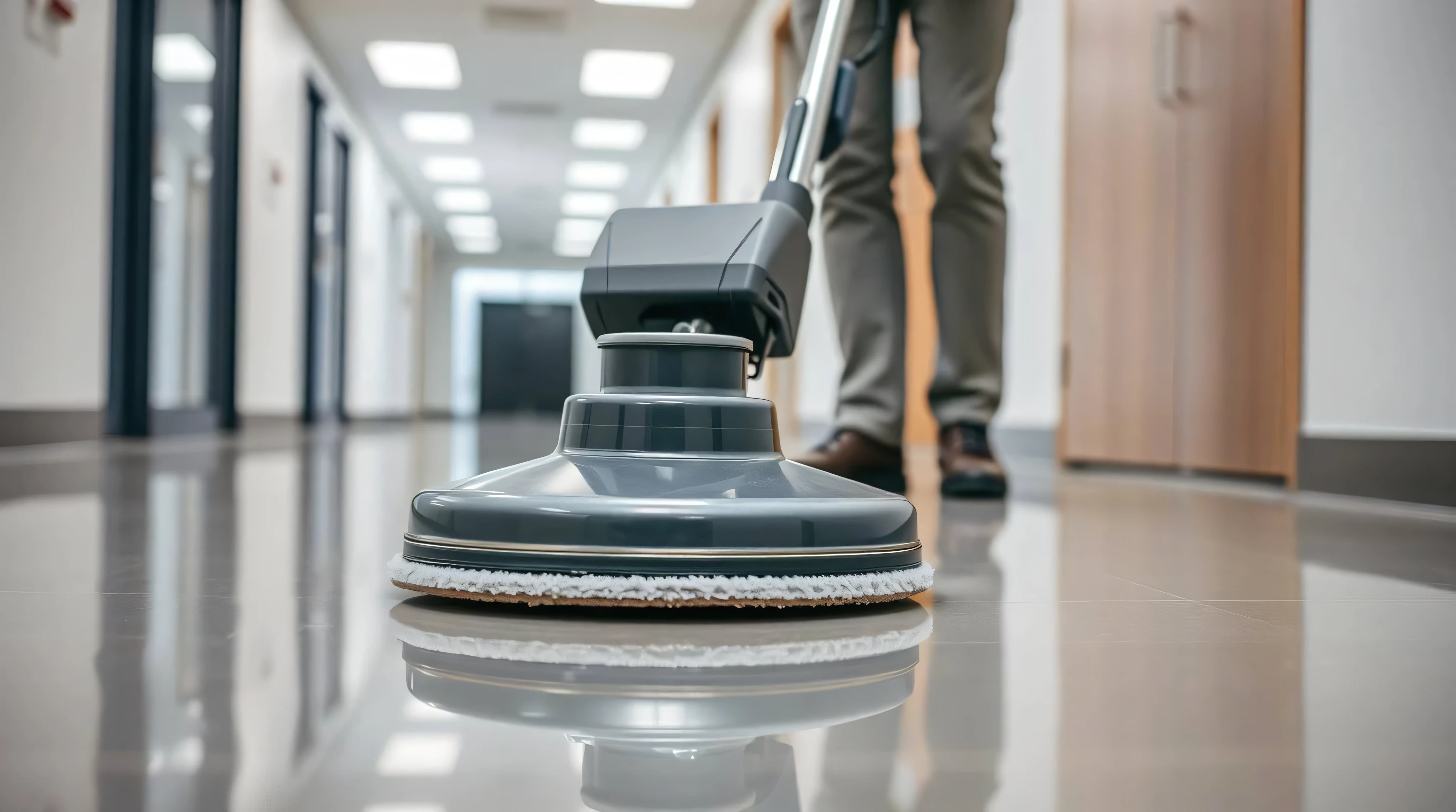Toxic Shine: Floor Waxing Releases Dangerous PFAS Chemicals into the Air, Study Finds

UNC researchers monitored the air in a university lab before, during and after a standard floor waxing. What they found was that before waxing began, the air in the lab contained only trace amounts of 6:2 FTOH—below the device’s limit of quantification. But as soon as cleaning and stripping started, levels jumped.

April 28, 2025 I By Dave DeFusco
When we think of clean, freshly waxed floors, we imagine gleaming surfaces and a job well done—not invisible chemicals floating in the air. But a new study led by UNC Chemistry Ph.D. student Michael Davern and Dr. Jason Surratt, professor of chemistry and environmental sciences and engineering, as well as Dr. Barbara Turpin, professor of environmental sciences and engineering, reveals that something far more dangerous than shine might be lingering after a wax job: toxic chemicals in the air.
Their research, published in Environmental Science & Technology Letters, focuses on a class of chemicals called fluorotelomer alcohols (FTOHs)—specifically, one known as 6:2 FTOH. These chemicals are part of the notorious PFAS family, also known as “forever chemicals” for their persistence in the environment and the human body. While PFAS are commonly found in food wrappers, nonstick pans, rain jackets and even ski wax, the researchers zeroed in on floor wax—a source of PFAS exposure that’s been largely overlooked.
“We set out to answer a critical question: Are workers inhaling dangerous levels of PFAS during floor waxing? And if so, how much are they breathing in and how long does it stay in the air?” said Davern, lead author of the study.
To find out, the researchers turned to a cutting-edge instrument called Iodide Chemical Ionization Mass Spectrometer (I-CIMS). Unlike older methods that require collecting air samples over days or weeks, I-CIMS gives a real-time view of what’s in the air second by second—making it ideal for catching short bursts of chemical exposure, like those that happen during cleaning tasks.

Using this technology, the researchers monitored the air in a university lab before, during and after a standard floor waxing procedure. What they found was eye-opening. Before waxing began, the air in the lab contained only trace amounts of 6:2 FTOH—below the device’s limit of quantification. But as soon as cleaning and stripping started, levels jumped. The highest spikes came during the actual waxing, when concentrations soared to as much as 457 nanograms per cubic meter—nearly 200 times higher than typical indoor levels.
“Our study revealed that the application of each wax layer brought a new burst of emissions, with the highest release during the first layer,” Dr. Surratt, senior author of the study. “Interestingly, emissions slowed with each new coat, likely because some of the chemicals got trapped in the earlier layers of wax.”
When the workers left the room between layers to let the wax dry, the researchers tracked when they were present using another chemical signal in the air: lactic acid, which comes from people’s breath and skin. The overlap of lactic acid and 6:2 FTOH signals helped the team estimate exactly how long workers were exposed during each step.
The levels of 6:2 FTOH detected in this study, though elevated, were still below official safety thresholds set by European agencies, but the researchers point out that their test site—a lab with excellent air ventilation—represents a best-case scenario. In schools, office buildings or homes with lower ventilation, the same floor waxing activity could lead to much higher exposures.
When 6:2 FTOH is inhaled, the human body can break it down into other toxic PFAS compounds, including perfluorohexanoic acid (PFHxA) and perfluoroheptanoic acid (PFHpA). These byproducts, like many PFAS, have been linked to cancer, autoimmune diseases and developmental problems. While the estimated intake for workers during this experiment was about 1.6 nanograms per kilogram of body weight, that number could rise significantly in real-world settings, especially with poor ventilation or longer exposure times.
“What makes this research so important isn’t just the specific numbers—it’s the larger truth it reveals: we are exposed to PFAS in ways we don’t even realize,” said Davern. “Floor wax is just one example. Every time a janitor buffs a school hallway, a maintenance worker preps a hospital floor or someone waxes their kitchen, they may be unknowingly breathing in harmful chemicals.”
Previous studies looked at PFAS exposure by testing surfaces or using older, slower sampling methods. This team’s work pushes the science forward by showing how PFAS behave in real time, offering a clearer view of the true risk to workers and consumers.
This study is a call to action—for more monitoring, better regulations and perhaps most urgently, safer product alternatives. It also underscores the power of real-time air analysis in understanding how chemicals affect indoor air quality, particularly during common tasks like cleaning. For now, the best advice is simple: ventilation matters. Opening windows, using fans or leaving the room while wax dries can make a big difference. Ultimately, though, safer products and stricter oversight may be the only way to clear the air—for good.
“Most people don’t realize they’re being exposed to these chemicals,” said Dr. Surratt. “Our goal is to fill in those gaps and give people—especially workers—the information they need to protect themselves.”

